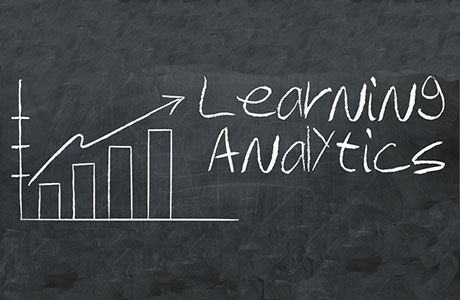The emerging field of learning analytics is concerned with gathering, analyzing and reporting on data about students and their learning environments, in order to better understand and optimize learning outcomes.
Some learning analytics tools, such as the Socrato software, use data and models to predict student progress and performance. Socrato seeks to move beyond tools that replicate “pencil and paper” learning processes, to bring the power of data analysis to test preparation. As one of the first “applied” examples of learning analytics, the Socrato system specifically helps learners analyze learning patterns, quantify strengths and weaknesses, and fine-tune test preparation and practice test-taking to meet performance goals when taking standardized tests like the SAT and ACT.
In a broader context, learning analytics is envisioned as a tool for improving education in nearly any environment. One new company, Junyo, was created to “make learning data actionable and fun to improve each student’s achievement.”
The idea behind Junyo is that “data, analytics and design can transform education” – in contrast to today’s approach, where students’ learning is measured with periodic testing/grading, including once-a-year standardized tests. These infrequent measurements are rarely correlated in ways that provide any insight of value to the student, and often their results are not available in time to guide instruction.
But better technology and models exist. Google, Facebook and other popular social networking sites collect millions of data points related to their users throughout the day, which are applied to improve search results, recommend new content, and so on. The Junyo team envisions leveraging these kinds of analytics to guide educational decisions. The frequent collection of detailed data can ultimately provide a basis for assessing and improving learning outcomes.
What kinds of information and insight will these new learning analytics deliver? “Visualizations” and “recommendations” to “empower educators to make smart decisions” are some of what is envisioned.
As Junyo founder and CEO Steve Schoettler said in his keynote address at the Strata 2012 conference, “If we’re going to bring data to education, we need to know what to measure, and the most important thing to measure is the student, the learner – that’s the center of education processes.” One of the core points of his talk is that today’s reliance on test scores leads to misinterpretation and therefore misguided policy decisions. Further, test scores cannot adequately represent a student and his or her context, including cognitive ability, learning style, family situation and so on – all of which are important factors to improving education for that individual.
Learning analytics type models that include “personalization” factors like these are already used in social gaming to understand motivation, and in social networks to recommend content, new friends and so on. For education, the outcome could instead be feedback based on formative assessments and leading to customized instructional programs that reflect each learner’s unique needs.
Parallel approaches tried in schools are said to have doubled school performance – but these techniques are time-consuming and most teachers aren’t equipped to work with them. Schoettler envisions an ideal scenario in which technology makes these techniques available nationwide, while also gathering “big data” about learning outcomes on an unprecedented scale to support personalized learning programs.
What learning data can you envision being gathered and operationalized to improve education at your school, university or tutoring program?
Featured image courtesy of EDUCAUSE.
SAT vs ACT: Choosing the Right Test [NEW EBOOK]
Download this free 20-Page Ebook for Tutors Now!
Our free 20-page ebook is a step-by-step guide on how to select the right test for your student. Learn everything you need to know about using the PLAN and PSAT to improve student scores, how to leverage learning analytics to select one test over the other, and other tips on how to take the guesswork out of selecting the ACT vs the SAT.











